Mimicry and Camouflage
I think you must all have heard the story of the Monarch butterfly (Danaus plexippus) and its evil twin the Viceroy ( Limenitis archippus archippus). The Monarch has a noxious taste because of its favorite foodstuff (milkweed leaves), and birds quickly learn not to eat them. The Viceroy just tastes like generic butterfly. But the Viceroy looks enough like a Monarch that many birds who have learned the bitter truth about the Monarch will not touch a Viceroy. Here you see the Monarch who, as an adult, loves purple coneflowers and other Rudbeckia relatives , but when she is ready to lay her eggs, she deposits them one by one on a milkweed leaf, where they grow into large fat caterpillars with rings of white, yellow and black around them. (Viceroy larvae eat willow, poplar, aspen, and fruit (apple, cherry, and plum) leaves.) I haven't seen a Viceroy for years, but this picture was cropped out of a photo of some of my specimens that I saved from 1954.
This kind of mimicry is called Batesian, and happens when one creature looks like another that has a natural defense against predation.
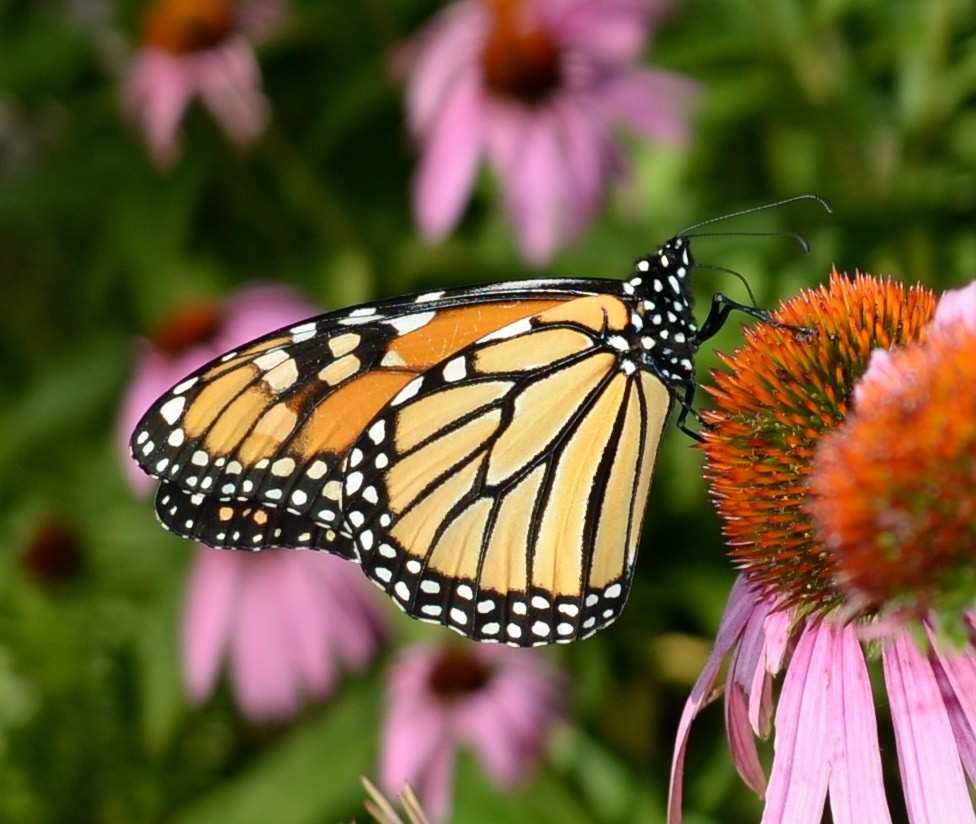
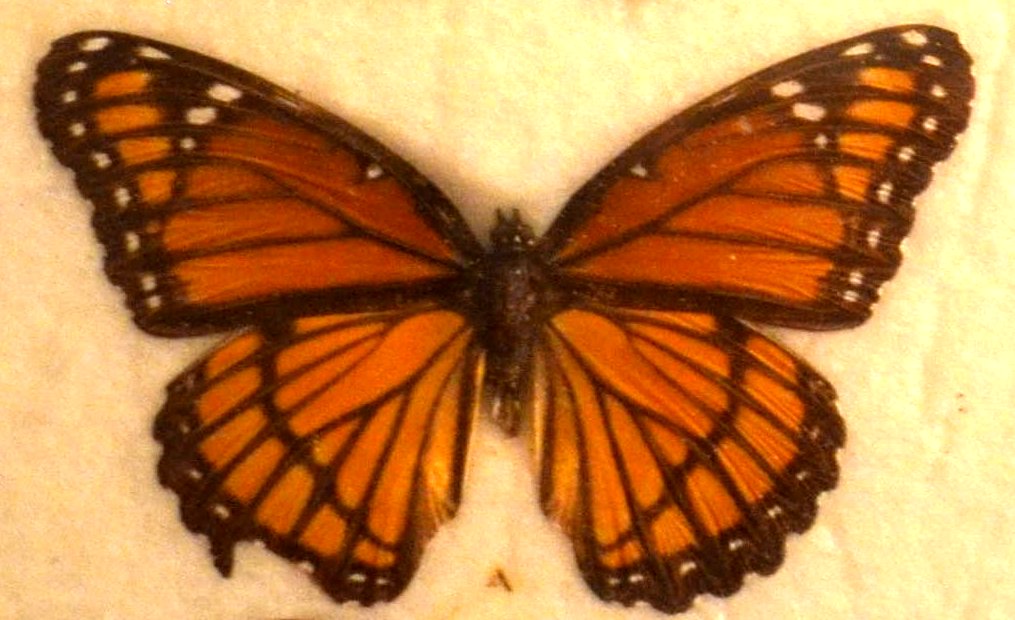
Here is an article from Britannia on the different kinds of mimicry.
I've just found an article from 1991 that claims that Viceroys are just as unpalatable as Monarchs. So this is not true Batesian mimicry! In fact "This implies that viceroys are Müllerian co-mimics of the danaines and prompts a comprehensive reassessment of this widely cited exemplar of mimicry. In fact, they say this should really be an example of Müllerian
mimicry."
Mimicry isn't limited to creatures imitating another of the same general shape, size and color. Here is a fly (Sparnopolius confusus) imitating a bee. Since most of the fly's predators are afraid of bees, they avoid this fly like crazy. There is even a whole family of flies who mimic various predator-types. Many of the hover flies look like wasps or bees. The last three flies on this row (Spilomyia longicornis) (three and four are the same species) are all wasp imitators. The first time I saw one of these large flies was while I was taking pictures in the goldenrod. The "wasp" flew towards me making a terrible buzzing sound. I was sure I was being attacked by a huge wasp. I finally backed away far enough for the attack to end. I didn't realize until I was cropping the day's haul of pictures that it had been a FLY! This is also a case of Batesian mimicry, because a Wasp looks scarier than a Fly.
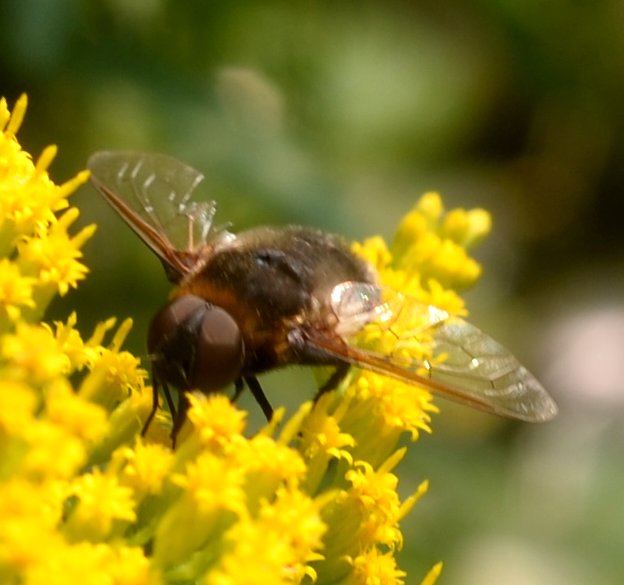
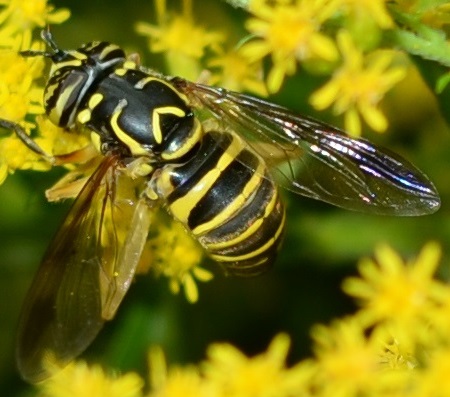

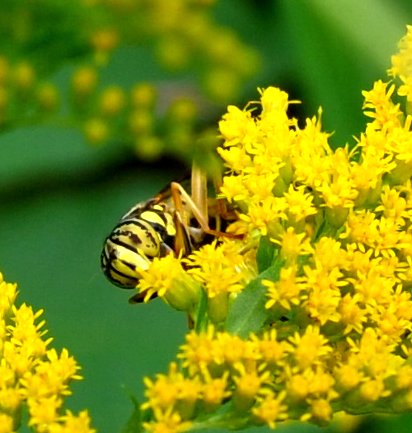
Amazing fly from BG
I always get a thrill when I think I have found a new wasp, and this first one had all the right ingredients: yellow and black markings especially. But when I calmed down I saw the fly eyes - this one was a fly mimicking a wasp! and so are these next two...
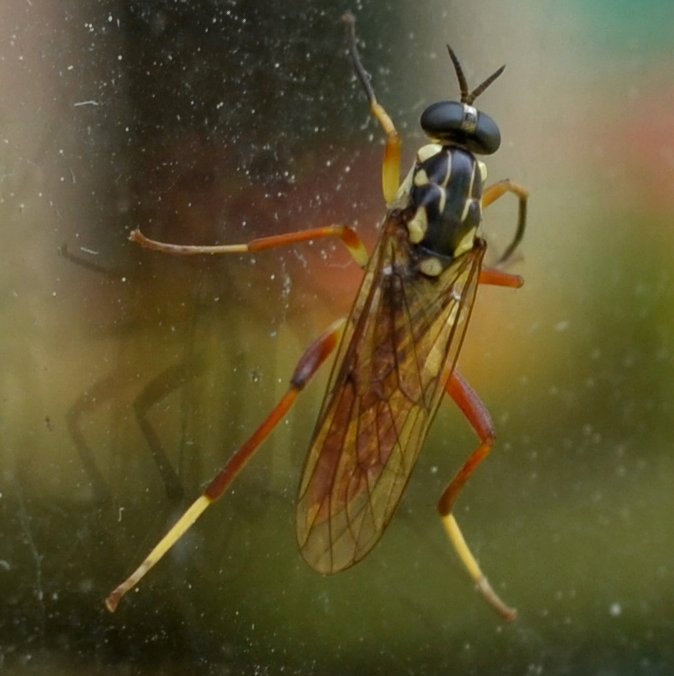
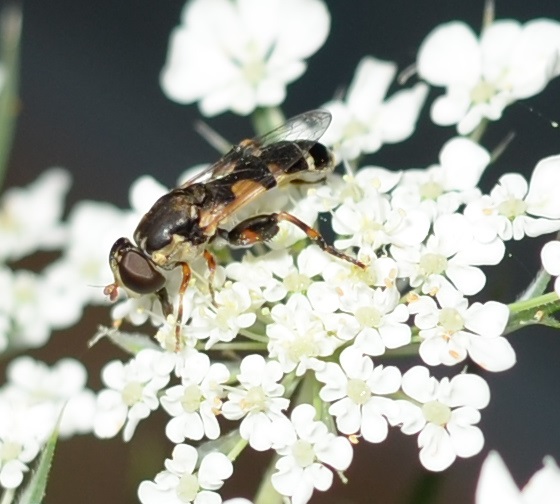
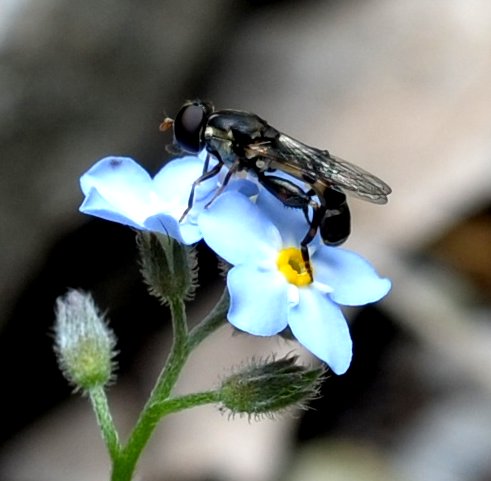
Here's even a wasp mimicking a hover fly!
Here is a little table with some fly heads and some waspish ones. You can see how hemispherical the flies' eyes are. The wasps' heads have more variety in shape (some round, some squarish, some pointy).
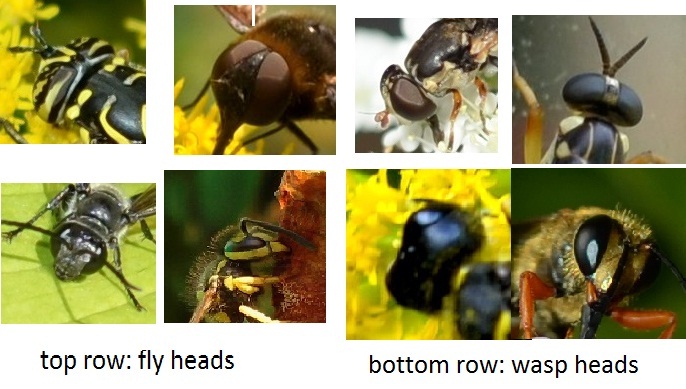
Look at these cute colorful little moths. Or are they? Moths have 2 pairs of wings, these puppies only have one pair. Too bad the eyes are so small and well hidden by the fluffy "hair". But they really are flies. Why does this fly imitate a harmless moth? I wonder.
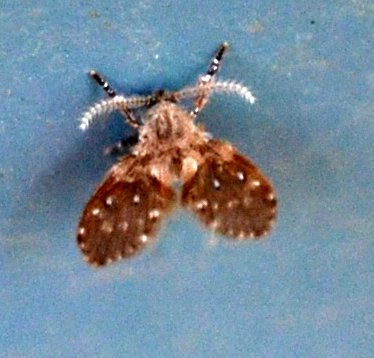
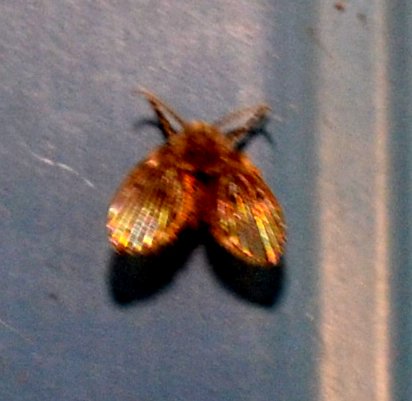
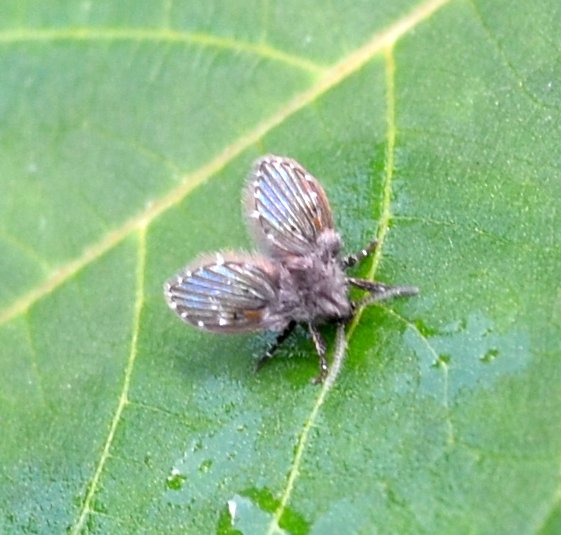
Many other orders of insects mimic other orders' members. Ants are a popular thing to mimic. It seems to be because Ants look threatening to other creatures.
Here is a nice Wiki article on mimicry
Here are some ant mimics from my yard (or so I believe or hope): The first may indeed be a cricket nymph resembling an ant so that it doesn't look someone's supper, or perhaps seems to be a member of a more dangerous army. (I'm making this guess for THIS ant-mimic based on a discussion of the Cricket genus Macroxiphus, which our nymph resembles, in this article.) Next is a Jumping Spider in the genus Peckhamia. Apparently the ant-like appearance of the Jumping Spider protects it from bigger Spiders who avoid ants.
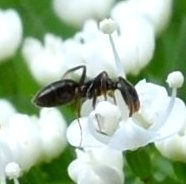
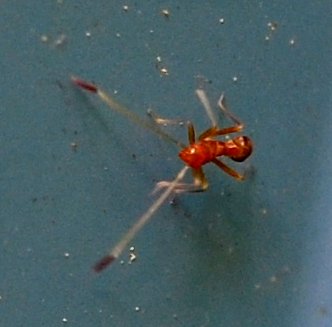
We have a couple of Plant Bugs whose nymph resembles an Ant. The Lupine Bug is an example. Here is the nymph, and then the adult Lupine Bug.
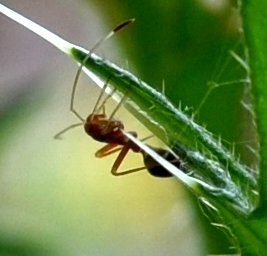
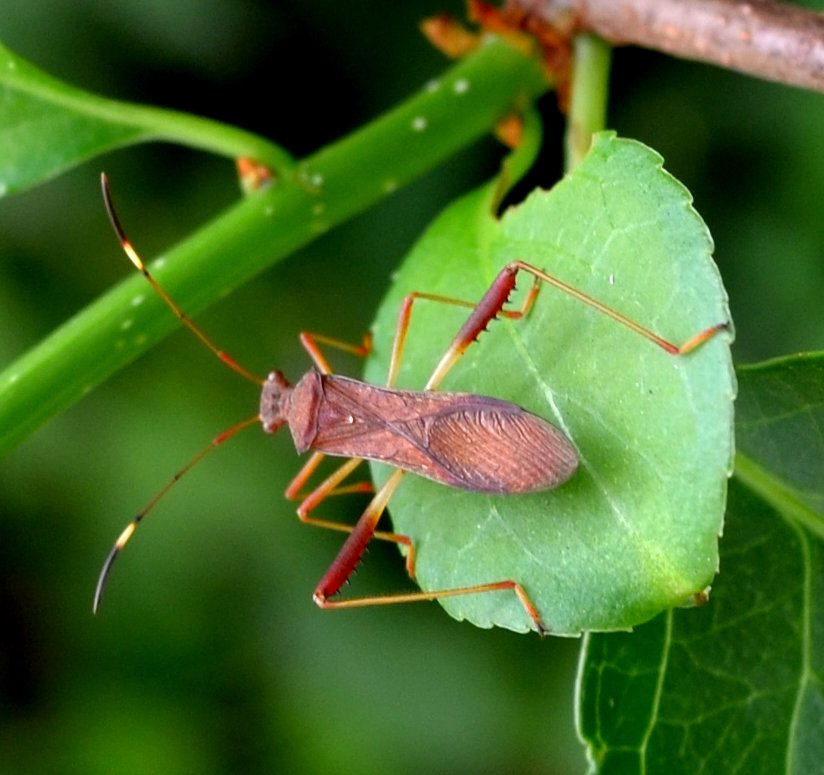
You'll see this picture in another context in this class, but here is my favorite Ant-mimic. In its nymphal form, it has an abdomen that actually looks as if Evolution was even more quirky than usual. The bits of this abdomen look as if they were assembled from a set of Lego-like pieces. In the second picture, it is a later instar but it is looking less ant-like because it has a set of strong wings developing. The Adult has lost any clue to its Antsy past.
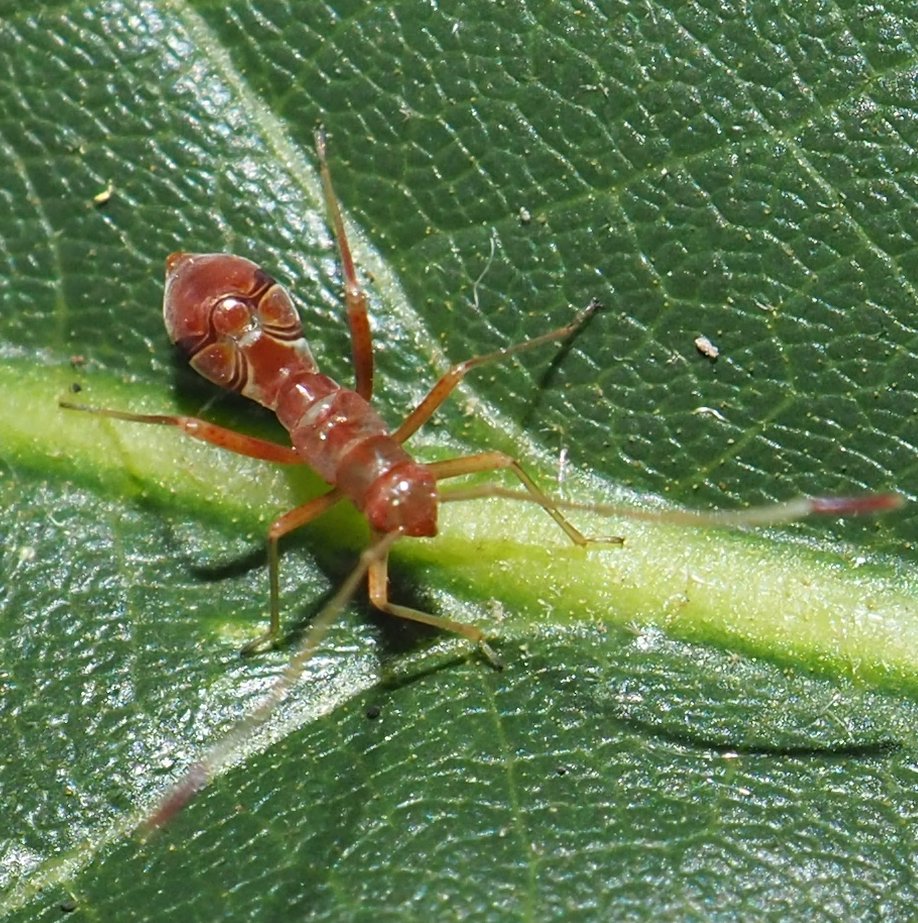
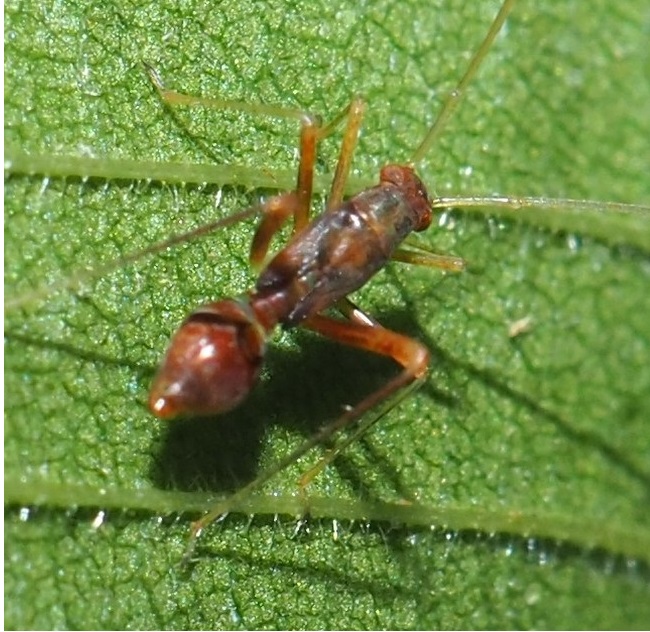
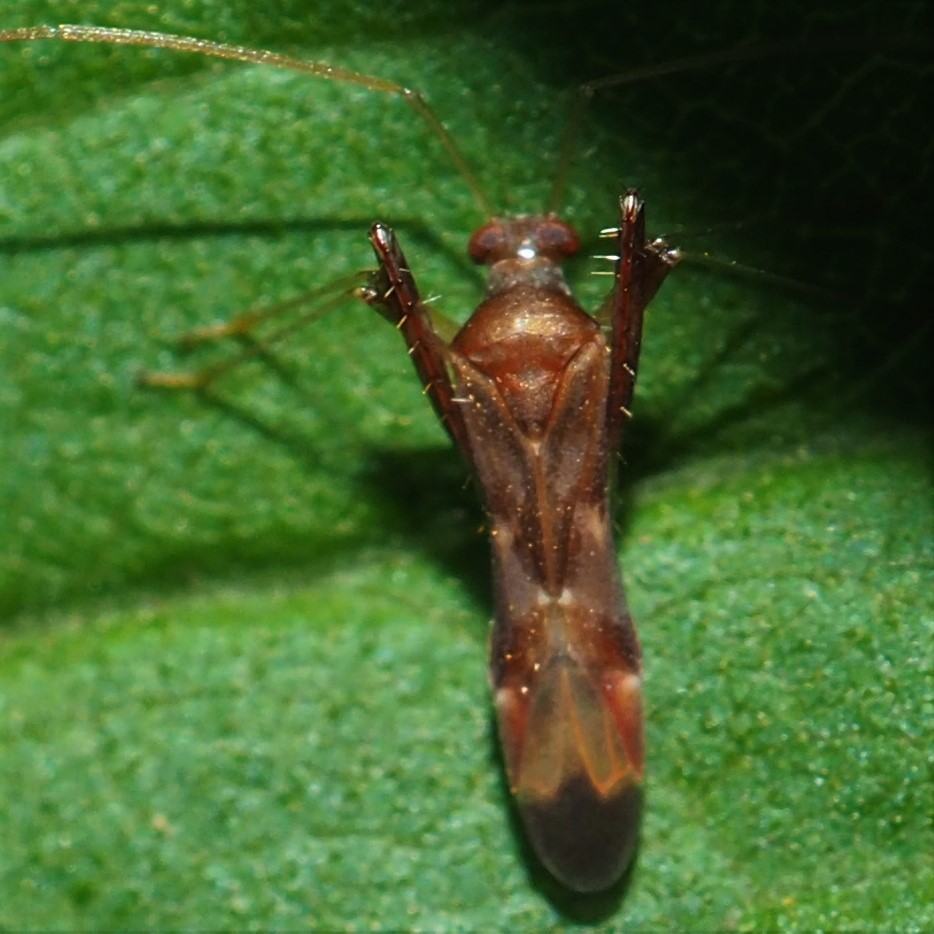
Let me just say that in the beginning of life, a creature may mutate to various forms and colors. Now if that mutation confers an advantage to the creature that has this mutation, we can say that the creature evolved to a new form. In the subsequent generations, that new form may continue to mutate and at each step the offspring with the mutation may become the preferred organism. It may produce a poison that keeps birds from eating it (each stage of this is a mutation) or it may be shaped in color, form, ability to fly (for instance) to a more viable group.
Mimicry is thus an example of the situation in which mutations are encouraged by natural selection.
A very interesting kind of evolution might be called parallel evolution. Here's an example in which some Orchids and Orchid-seeking Bees "force" changes in each other. Say that pollination of the orchid by the bee is most productive when the bee is hairy, and thus gathers more pollen from the orchid's "throat". Say that different bees have various "hairiness" factors. Now the bees head for the orchids. Say the hairiest bees thus cause most pollination, meaning that in the next generation of orchids, ones that were pollinated by the hairy bee are more plentiful than the other orchids. The orchid has achieved a benefit by being pollinated by the hairy bee. On the other hand, say the bee prefers the color blue (for example, actually I'm not sure any bees prefer blue) and suppose that a certain orchid comes in a variety of shades of color. The bees will flock to the orchids that are bluer than others. So in the next generation the bluer orchids have more offspring, and so after a number of generations there will be more and more blue orchids. The orchid AND the bees have influenced the evolution of each other.
For a few years I devoted my summers to raising some of the Giant Saturniid Moths, and wrote this little article about something they share that may help to make them frighten predators:
I hope this has given you some ideas of how evolution, mimicry and camouflage work together to make our world a bit more interesting.
You can watch this little youtube article in your copious spare time.
Top 10 Animals With Amazing Camouflage
Back to Main Menu
copyright Martha O'Kennon 2021





















